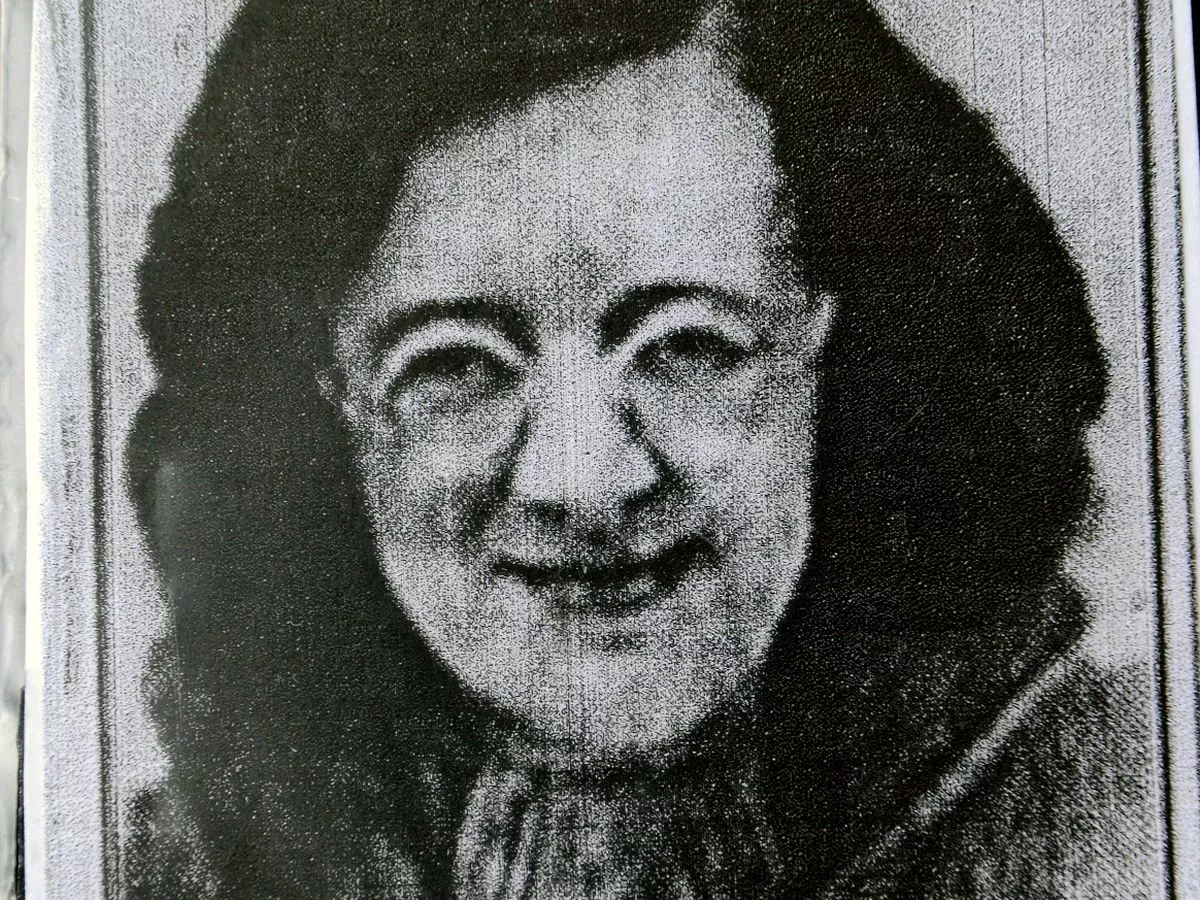Copyright manchestereveningnews

Bolton was in blackout as a police officer went about his rounds in the pitch-dark of Saturday, November 16, 1940. Two nights earlier, the Luftwaffe had launched a devastating blitz on Coventry, with nearly 500 bombers pounding the city over 11 hours. So there was a good reason the lights were off across Britain - but the blackout designed to hide homes and factories from German bombers was also the perfect cover for a murderer in Bolton , as that lone officer was about to find out. Earlier that evening, 17-year-old Minnie Stott left home at Clarence Street, near Bolton town centre, at around 7.45pm, telling her dad Fred she was going to the cinema. Minnie, known as Peggy by her close friends, was dressed in a striking blue woollen coat, crepe de chine scarf, green tweed skirt, flesh coloured stockings, and brown shoes. She was tall, and her large glasses made her look older than her years. The teenager, who had a good job as manageress at Hanbury’s grocery shop in Halliwell, was well-known in the town as a sociable dancer. Around 15 minutes after she left home, Minnie called into the United Cow Products restaurant on Bradshawgate, where her mother Alice Stott worked as a waitress, also telling her she was on her way to the picture house. READ MORE: Greater Manchester's unsolved murders as interactive map details 1,000 cases across Britain According to some reports, she said she was going to The Queen’s cinema, which was showing Bulldog Drummond at Bay that night, the ninth movie about the British First World War hero. It is not clear whether she made it to see the movie, but a short time after leaving her mother’s workplace, she was seen visiting a store on Bridge Street with another girl. Just before midnight, Constable Harry C Brooks was making a routine check of a lock-up shop. His lamp lit up a horrific scene - Minnie was lying on her back near the bottom of a shutter, her right arm partly extended over her head. She had clearly been murdered. Minnie had probably been dead about two hours. An inquest was later told there was still ‘a faint warmth’ when the officer touched her face. There was a trickle of blood at her mouth, and a red weal on her neck. It was believed Minnie had been strangled with her own scarf, which was missing, along with her underwear, indicating she had also been the victim of a sex attack. Around two weeks earlier, a similar murder had taken place in Liverpool, where a 15-year-old girl was found strangled to death in a blockhouse. Tragically, Minnie and her mother had spoken about the crime, with Mrs Stott warning her daughter “never to allow herself to be drawn into conversation with strangers”. Several weeks after Minnie’s murder, as her parents were leaving Heaton Cemetery, where their daughter was buried, they were approached by a mysterious woman. She told them that she had seen Minnie leaving a cafe in Bradshawgate with two girls on the night she was killed. They were followed by two young men, one of whom she named. According to the stranger, the men bundled Minnie into a car and drove off, and the other girls ran away. At the inquest into Minnie’s death, it was revealed that police had been unable to trace the mysterious woman, the two young men, or the girls who had been with Minnie. That was in spite of Mr Stott’s heartfelt plea for the mystery woman to come forward and tell police what she told him and his wife, which he said would “relieve our agonising distress and grief”. Bolton’s coroner, Mr H Fairbrother, returned an open verdict at the inquest, pointing out that there was “no evidence of actual murder”. Nor were there any signs of a struggle, according to Constable Brooks, who found the body. However, the cause of death was asphyxia due to strangulation - and police had no doubt that they were hunting a murderer. Bolton CID’s response was immediate and exhaustive. The investigation generated a staggering volume of work, with officers taking over 25,000 statements. The scale of their efforts was necessary, given the limitations of crime scene investigation techniques and technology at the time. Other obvious operational difficulties hampered the investigation - there was a war on, after all. By 1940, Britain was fully mobilized for the Home Front, and the primary focus of police forces across the nation had shifted toward supporting the war effort, particularly protecting lives and property during air raids. Police resources were stretched, with forces increasingly reliant on inexperienced volunteers, such as War Reserve Constables. Conducting a complex murder inquiry in these circumstances was a supremely difficult task. There was also the blackout to contend with, which provided the killer with a perfect cover to commit the crime. The manhunt continued regardless, with Bolton CID issuing numerous appeals to trace Minnie’s killer or anyone who had been with her on the night of her murder. Detectives never traced the mysterious woman who approached Mr and Mrs Stott as they visited their daughter’s grave, or the people she described and named. Nor did they ever find Minnie’s scarf. They did track down a soldier who had a drink with Minnie in the Founders Arms two nights before her death, but he was swiftly ruled out as a suspect. Detective Inspector Hodgson of Bolton CID also revealed that Minnie had been quarrelling with a man less than 200 yards from the garage yard where she was found dead. The detective told the Manchester Evening News: “She was spoken to by a youth who knew her and addressed her as ‘Peggy’. She replied back to him, acknowledging his identity. At the time she was in conversation with a man apparently between 20-25 years of age, of average build, clean shaven with eyes which appeared rather deep-set and high cheek bones. This man was wearing a dark overcoat and trilby hat well down on the forehead. “The couple were having words suggesting a disagreement.” This man was never traced and the case went cold. Police had to prioritise the war effort, especially as Luftwaffe raids increased in intensity, with bombs falling on Bolton in 1941. Minnie became another casualty of the war era. But then in 1995, there was a twist. A letter was sent to a local newspaper by a barber in Bolton. He said years earlier he had cut the hair of the son of one of the senior officers involved in the hunt for Minnie’s killer. The man had said his father always considered the case closed. The barber wrote: “He had traced the crime to a man in Bury , but the suspect committed suicide before he could be arrested... the police at the time were satisfied that justice had been done.” Minnie’s simple grave is in Heaton Cemetery. Her parents were laid to rest in the same plot, but probably due to the family’s tight financial situation, their names are not engraved on the headstone. Their daughter’s murder remains unsolved. It is now the oldest cold case in the files of Greater Manchester Police .



